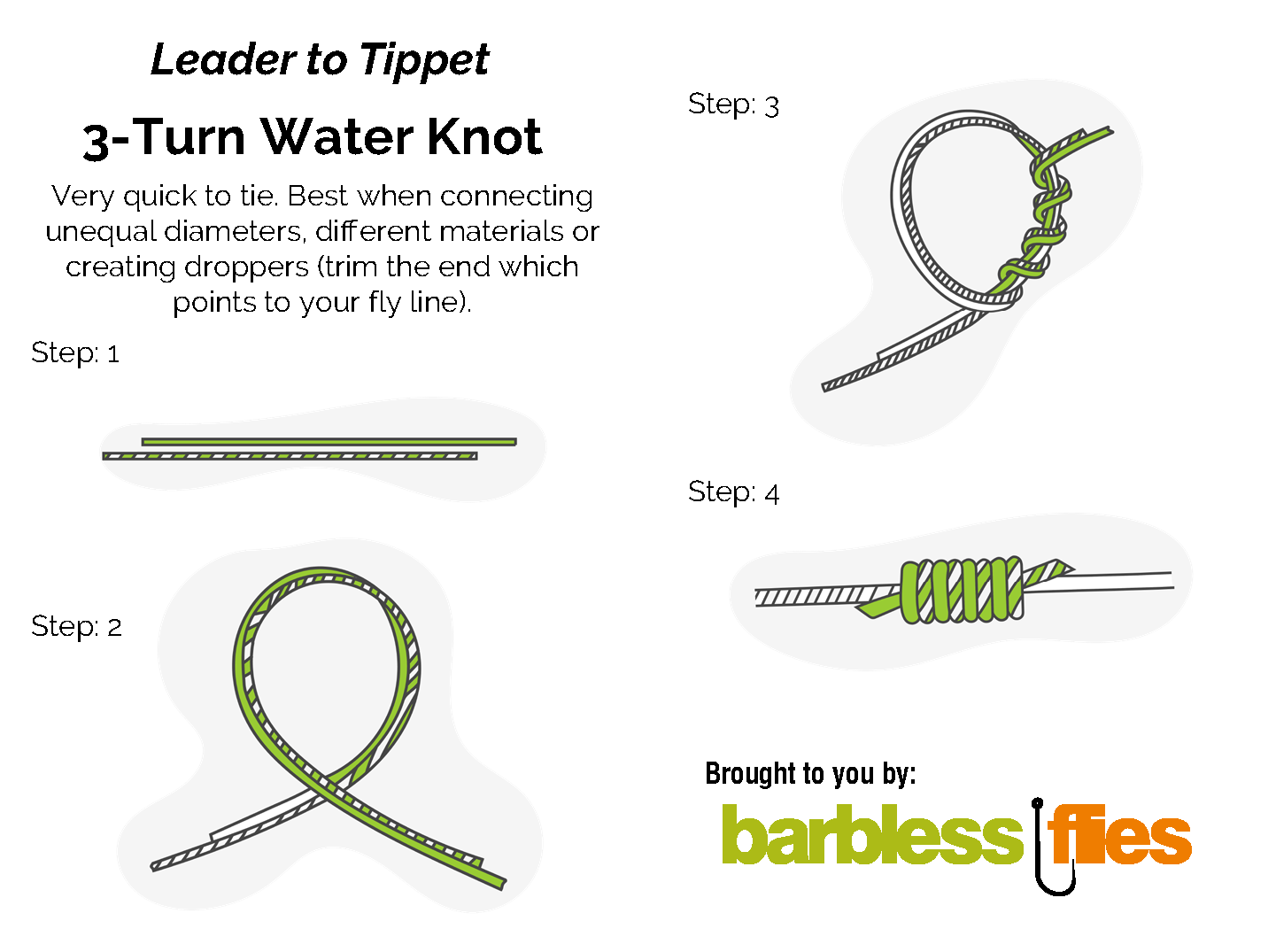All About Leaders - Part 1 - Leader Fundamentals


Introduction To Leaders
As a part of our commitment to providing interesting and sometimes even amusing content to you - our loyal email community - we've spent the winter months looking at areas we can cover that we don't think have been fully explored in detail before.
Over the past hundreds of years, there have been lots written regarding fly fishing - you should see my bookshelves in the office! So it's always going to be very difficult to write anything which is new and ground-breaking.
So we thought that we would take a niche subject and do a 'deep dive' to hopefully help us all when on the water.
As previously mentioned there is lots of fly fishing literature available - but not so much specifically about leaders.
So we thought we'd have a go ...
And we're going to start with the very basics.

Q. So, what is a leader?
A1. The short answer - The leader is an essential part of the fly fishing setup, the main aim of the leader is to efficiently transfer the energy generated by the fly line down to the fly, presenting the fly to the fish - well away from the tip of the fly line. This is why the leader needs to have a tapered design - thicker at the end that connects to the fly line, transitioning to a thinner material which attaches to the tippet and then to the fly.
A2. The long answer - As well as being classed by their weight, fly lines are also classed by their taper design, i.e. Weight Forward / Double Taper etc. This design (or profile) is what allows the energy of the cast to transfer along the fly line in the most efficient way, each of the different fly line tapers gives a slightly different presentation of the fly on the water. As the energy created by the cast travels down the fly line (due to its taper), it then needs to travel to the fly. If you just attached a level length of fishing line to the end of the fly line the energy would not effectively travel all the way to the fly (which is what we are trying to achieve to allow the fly to land in front of the fly line). So a leader with a tapered design is used.
The aim of the game is to get the fly to land well away from the tip of the fly line - this is the job of the leader.

Leader Terminology
In the above section, I've already used some terms that you may be unfamiliar with - such as tippet. In this section I will explain all of the terminology used in its most basic form - so we're all starting from the same place.
Tippet - Tippet is just a fancy name for the fishing line to which you attach your fly. You always add tippet to the thin end of your tapered leader and then attach your fly to the other end of the tippet. Whenever you change flies you will eat into the tippet you have added, once you have a small amount of tippet remaining, just replace it with a fresh, longer length of tippet. This way you will never eat into the tapered leader and in turn, never alter the tapered design of your leader.
Butt Section - The butt section of a leader is the thick end, i.e. the end which you attach to your fly line.
Tip Section - The tip section of a leader is the part to which you attach your tippet section.
Diameter - Both leaders and tippets are specified by either their breaking strains (i.e. how much weight is needed to snap it) or their ‘X’ ratings. When discussing leaders and tippets it is always better to talk about their diameters rather than their breaking strains. this dictates the tippet’s diameter (not its strength), with 2X being thicker than 8X. The ‘X’ system originates from the times when catgut was used, and the ‘X’ was the number of times the gut was fed through a machine to make it thinner (i.e. if you fed it through 8 times it would be thinner than if you only passed it through twice).
Stiffness - When discussing leaders, the other important feature is the stiffness of the material you choose for your leader. To aid in the transition of energy through the fly line to the fly, you need to make sure that stiffer material is used in the butt sections of the leader, as this aids the transition of energy through to the more supple sections.

Leader Materials
As mentioned above, the material your leader is made from does matter. This is where there are two distinct choices, you either use Nylon (sometimes called copolymer/monofilament) or Fluorocarbon. Generally, nylon is supple and soft with more stretch than fluorocarbon, which is much stiffer with great abrasion resistance. The various attributes of these two different materials make them great for making fly fishing leaders.
Nylon - Nylon, or monofilament nylon to give it its technical name, is more supple and lends itself to any style of dry fly fishing - where the whole of the leader will either be on or in, the surface of the water. Knot strength is also a key issue to address, using nylon it is much easier to tie secure and durable knots.
Fluorocarbon - This material is the best choice for whenever you need a leader which will be used under the surface of the water. Fluorocarbon material has several advantages over nylon. It's a much denser material and therefore sinks faster than nylon, making it ideal for any nymphing rig. Fluorocarbon also has the advantage of being near-transparent in water due to its refractive index being very similar to that of water. Additionally, the high tensile strength of fluorocarbon allows you to use smaller diameters with higher strength and still maintain low visibility. The only drawback with fluorocarbon is its knotability (is that even a word). Due to the stiffer nature of the material it does need care when tying knots to make sure they are properly lubricated and seated properly.
Essentially - if you're fishing dry flies, choose nylon/mono leader materials, and if you're nymphing use fluorocarbon.

Always Start From The Fly
When starting to think of the leader, it always pays to start from the fly and work backwards, i.e. if you are targeting small wild fish with a size 18 midge imitation you do not need a really thick leader or heavy fly line to turn the fly over.
Small flies require small diameter tippets and larger flies require larger tippets to turn them over properly. A great 'rule of thumb' to use is called:
The Rule of 3
Take the size of the fly you will be using, then divide it by 3, this gives a good approximation of the 'X' rating of the tippet to use. For example, a size 12 fly is usually fished with a 4X tippet and a size 18 fly is usually tied to a 6X tippet.

Knotless Tapered Leaders
As you can probably guess, a Knotless Tapered Leader is just as the name suggests, it's an extruded section of material (usually 9ft long) with a built-in taper.
Virtually all fly anglers use these manufactured leaders as they are very cost-effective and easy to use. The only trouble anglers normally have is unravelling them!
I've found that the best way to do it is as follows:
- Remove the leader from the packet.
- Make your fingers into a cone and put them in the center of the leader, then spread your fingers out so the coil of leader is trapped around them.
- Always start unravelling the leader from the thick end and carefully uncoil it from around your fingers.
- Once the leader is totally uncoiled you will need to give it a stretch to remove any memory from it and allow it to lay straight on the water.
Knots
When it comes to knots and leaders there are only a couple you need to know.
The 3-Turn Water Knot, which is used to attach your tippet to the tapered leader:

And, the Perfection Loop, which is used to tie a loop in the Butt end of the leader to attach (using a loop-to-loop connection) to your fly line. The Perfection Loop is so called because it is one of the only loop style knots where the loop sits in a perfectly straight line to the main line, ideal for a tapered leader.
Anglers usually use a loop-to-loop connection and this makes the leader very easy to change should you get into any tangles:

Thanks for taking the time to read through Part 1 of the "All About Leaders" series, we do realise that this first part is very basic information, but we wanted everyone to start from the same base before we get more technical.
Over the coming months, we will be expanding and diving much deeper into leader mechanics and construction, discussing how to tailor your own leaders for that perfect presentation based on the scenarios you will encounter when out on the water.
Tight lines.

P.S. This email is brought to you with the sole intent to spread the information around so we can all maybe learn something. If you would like to buy any tapered leaders or tippet, we do hope that you will consider us and see what we have to offer:
P.P.S. We'd love to hear from you if you have any comments/corrections, or other subjects you'd like us to cover. Just reply to this email and I will be in touch.


